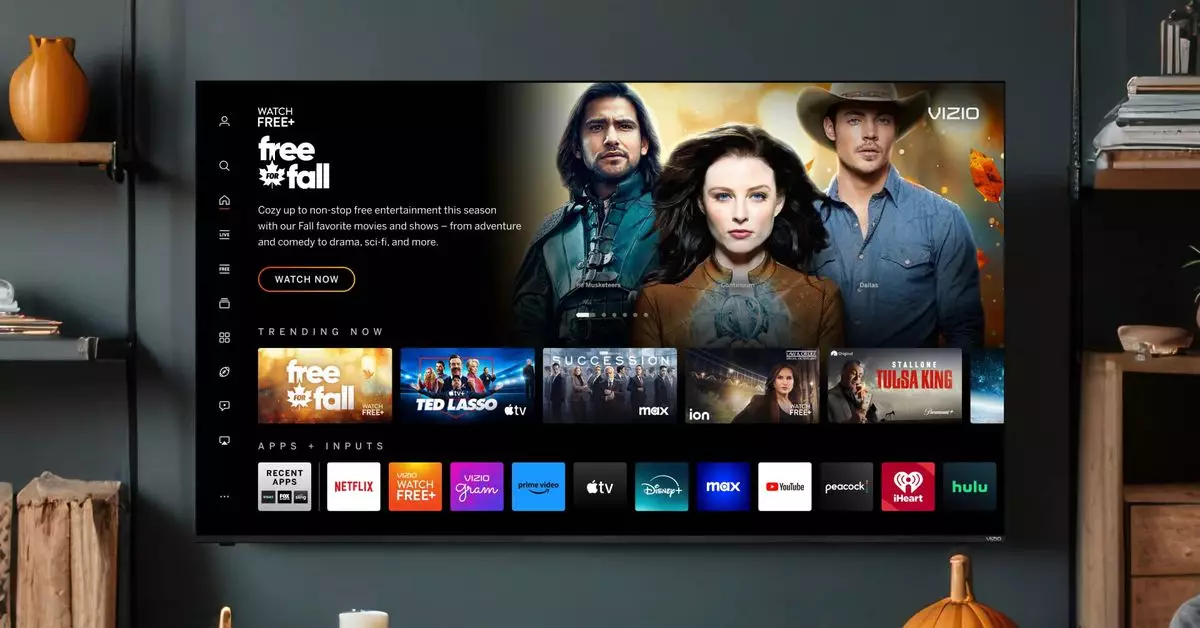In a significant step towards enhancing its advertising capabilities, Walmart has officially completed its acquisition of Vizio, the notable television manufacturer. The $2.3 billion deal marks Walmart’s latest initiative in diversifying its business operations beyond retail. By consolidating Vizio under its umbrella, Walmart aims to tap into the lucrative advertising market, an area where it sees potential for substantial growth. This acquisition follows an announcement made earlier in February and has closed successfully as of this week, demonstrating Walmart’s commitment to expanding its digital footprint.
The Integration of Advertising and Data Insights
The key aspect of this acquisition lies in Vizio’s advertising and data division, known as Platform Plus. Walmart views this component as crucial since it comprises the majority of Vizio’s gross profit. With a wealth of consumer data at its disposal, Walmart can enhance its targeted advertising capabilities, not only through its own platforms but also by integrating with major streaming services such as Disney Plus and Hulu. This strategic move positions Walmart to capitalize on its existing shopper data, further refining its ability to deliver personalized ad experiences to consumers.
Despite the apparent advantages of this acquisition, it brings to light concerns surrounding consumer privacy. Vizio has previously faced backlash for its data tracking practices, notably a settlement with the Federal Trade Commission in 2017 over unauthorized viewer data collection. Critics argue that Walmart’s ownership could exacerbate these privacy issues, as platforms can utilize consumer data for more invasive advertising strategies. As consumers become increasingly wary of how their data is used, Walmart will have to navigate these challenges cautiously to maintain trust and credibility.
Competitive Landscape in the Advertising Domain
The acquisition could also provide Vizio with a competitive edge against other budget-friendly television brands that generate significant income through advertising. Notably, Roku, which has successfully entered this market, reported advertising and subscription revenues exceeding $908 million for the third quarter of 2024. This figure starkly contrasts Vizio’s earnings of approximately $37.17 per user, highlighting the challenges Vizio faces in catching up. By leveraging Walmart’s resources and expertise, Vizio may be able to accelerate its advertising model and increase revenue generated from this sector.
While the merger appears to be a strategic alignment with promising prospects, both Walmart and Vizio have indicated that they will maintain their operational independence for the time being. Vizio’s CEO, William Wang, will continue to lead the company, ensuring that its brand identity and operational strategies remain intact. This arrangement allows Walmart to integrate Vizio’s advertising capabilities while respecting the brand’s established market position. As Walmart delves deeper into the advertising space, its partnership with Vizio could well usher in a new era of data-driven marketing strategies within the retail landscape.
Walmart’s acquisition of Vizio serves as a critical juncture for both companies in the evolving consumer tech ecosystem. As they navigate the challenges and opportunities this partnership presents, the implications for the advertising industry at large cannot be underestimated.


Leave a Reply
You must be logged in to post a comment.